Get wild this New Year’s Eve: 4 places to see animals along the Central Coast

By Rachel Schnalzer
Design and illustrations by Jade Cuevas
Good morning, fellow Escapists. I hope you’re having a peaceful holiday week, filled with rest or adventure or some combination of the two — whatever feels right as we weather another pandemic winter.
New Year’s Eve, usually associated with trips to Las Vegas, Times Square in New York or other raucous destinations, is bound to feel subdued for most us, given the spreading Omicron variant.
That’s why, in this edition of Escapes, you’ll find ideas for safer outdoor trips you can take over the holiday weekend. They’ll help you trade in your inner party animal for the opportunity to see actual wild animals found up and down the Central California coast.
Where are you traveling in the New Year? Let me know if you have recommendations or places you’d like to see included in Escapes so I can pass them along in the weeks ahead.
Get inspired to get away.
Explore California, the West and beyond with the weekly Escapes newsletter.
You may occasionally receive promotional content from the Los Angeles Times.
Explore the Western Monarch Trail
There’s the mighty Pacific Crest Trail and the John Muir Trail, the Lost Coast Trail and the Trans Catalina Trail, cheese trails and ice cream trails and, of course, wine trails dotted across California.
But what about the Western Monarch Trail?
The recently launched route follows the iconic butterfly’s migratory path, with sites set up to provide the insects with shelter, nectar and native milkweed along their journey.
Each year, from October to February, Western monarchs “overwinter” along the Central Coast, although they’ve become increasingly more difficult to spot as time goes on. The situation is bleak: Since the 1980s, the butterfly’s population has declined more than 99% along coastal California.
Several sites along the trail, such as Montaña de Oro State Park and Harmony Headlands State Park, are open to the public, with signage educating visitors about the butterflies.
The Pismo Beach State Monarch Butterfly Grove, included on Times travel writer Christopher Reynolds’ latest roundup of the 40 best California experiences, is another key destination along the trail.
The grove is “an unprepossessing cluster of eucalyptus and cypress trees that may befuddle you at first, especially if it’s a cloudy day. But look closely,” Reynolds writes. “Those dirty leaves you see might be monarch wings. When the sun comes out, their orange hues blaze, and you realize how many butterflies you’re looking at.”
Interested in learning more about the Western monarch and how to help protect it? The Xerces Society offers plenty of additional information.
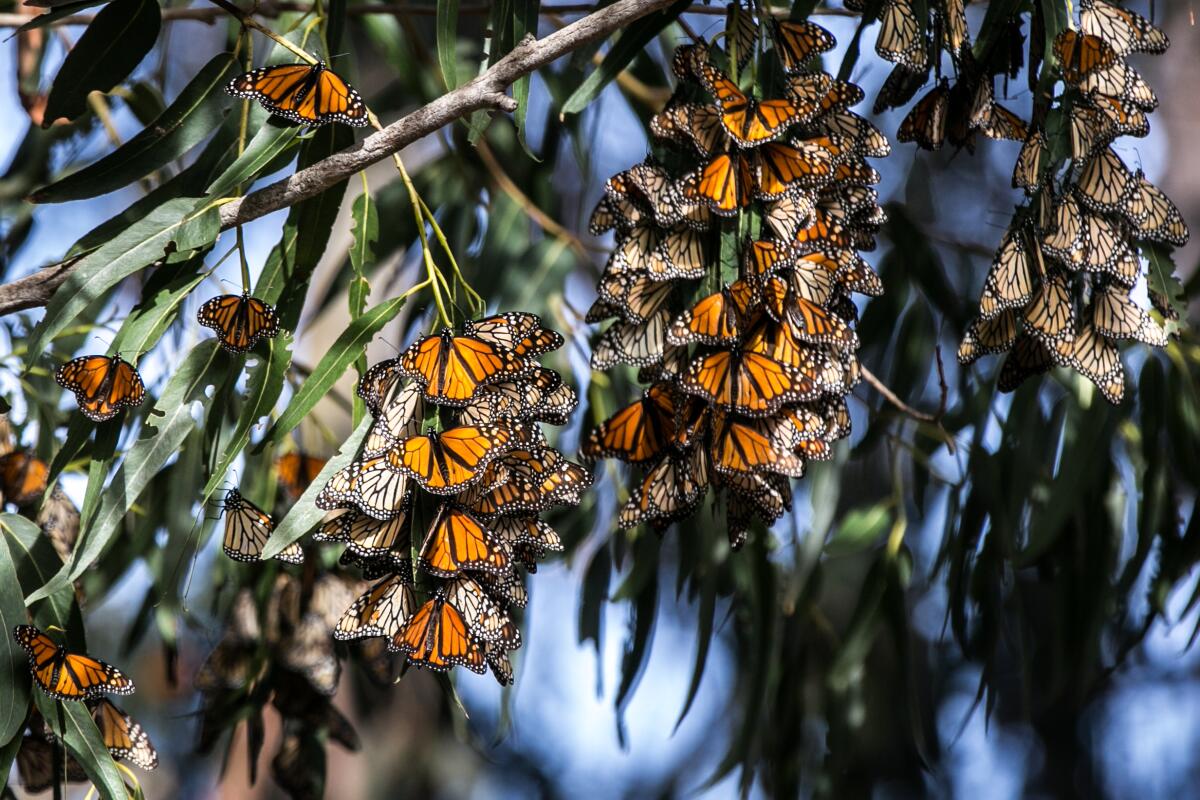
Spot sea otters in Moss Landing
Sure, you can easily find sea otters at their popular exhibit in the Monterey Bay Aquarium, but nothing can beat the magic of spotting the furry marine mammals in the wild.
Elkhorn Slough, a large tract of tidal marsh that provides a home for hundreds of species of flora and fauna, is a memorable place to watch sea otters swim and socialize.
In 2019, my partner and I rented a sit-on-top double kayak from Monterey Bay Kayaks and spent a few hours paddling the waterways. Despite encountering some clouds and persistent wind, this adventure remains one of my favorites along the California coast. There’s just nothing like seeing otters dip in and out of the water (from a safe distance, of course).
Rentals from Monterey Bay Kayaks’ Elkhorn Slough location range from $35 to $45 for up to four hours on the water.
In addition to looking for solo sea otters swimming through the water, keep your eyes peeled for a “raft.” That’s when a group of otters sleep side by side, wrapped in kelp so they don’t drift apart. The rafts may include anywhere from two or three to dozens of sea otters snoozing in unison.
If you go, don’t disturb any wildlife while paddling through Elkhorn Slough. (That includes making noises to get the otters to look your way as you take a photo.) Sea Otter Savvy, a community outreach initiative aimed at protecting the animals, provides more guidance here.

See elephant seals near San Simeon
Considering a trip to Big Sur in the next month or two?
Winter is prime time for spotting enormous northern elephant seals at the Piedras Blancas Rookery, 70 miles south of Big Sur, Reynolds writes.
“Hundreds of these seals at a time bask, spar, give birth and mate on a ridiculously beautiful stretch of state-controlled undeveloped coastline,” he describes.
The Piedras Blancas seals usually give birth during January and February, continuing a cycle of life at the rookery that dates back to the 1990s when a seal colony appeared onshore.
The rookery is free and open every day with a wheelchair-accessible boardwalk for viewing the seals from a safe distance.
Visitors should keep an eye out for volunteer docents, recognizable in blue jackets, who can provide additional context about the ungainly yet impressive animals. If you go, keep at least 25 feet away from the seals and leave pets and drones at home.
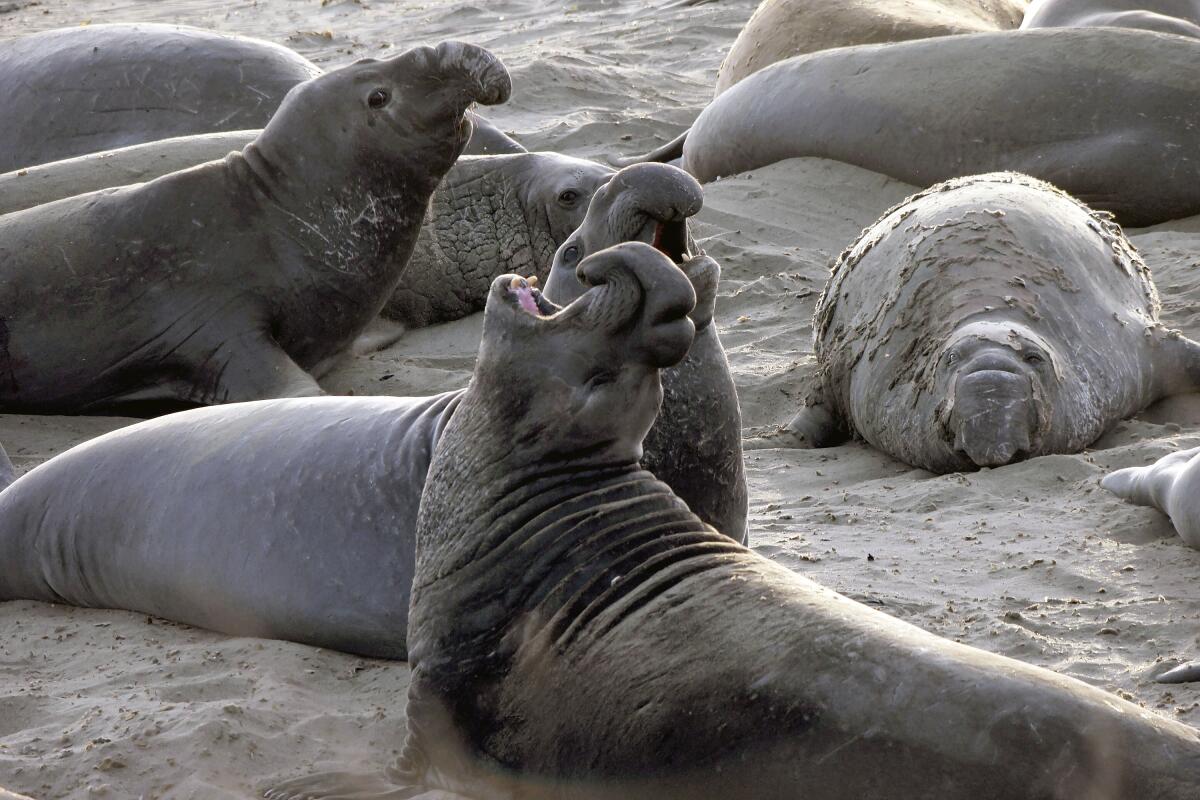
Enjoying this newsletter? Consider subscribing to the Los Angeles Times
Your support helps us deliver the news that matters most. Become a subscriber.
Ride Clydesdales in Cambria
Clydesdales, made famous by their association with Budweiser, are among the largest horses on the planet, with some weighing as much as a Volkswagen Beetle.
Despite their staggering size, most Clydesdales are mellow. I know from personal experience. As a kid growing up in Pennsylvania, I always felt safe and secure riding Lady, a gentle 6-foot-tall Clydesdale, through wooded trails at a horse farm near my hometown.
Travelers have the chance to meet and ride Clydesdales in Cambria, a coastal community that made Reynolds’ list of the top 40 winter destinations in California. Covell Ranch offers trail rides through golden pastures and pine forests near the town, with an ocean view and plenty of photo opportunities.
Trail rides, available Monday through Saturday, cost $120 per rider and must be booked in advance over the phone. Call (805) 975-7332 to learn more and reserve a spot.
Not keen on riding but still interested in seeing the horses? Covell also offers vehicle tours that take guests through the 2,000-acre ranch, home to dozens of Clydesdales.
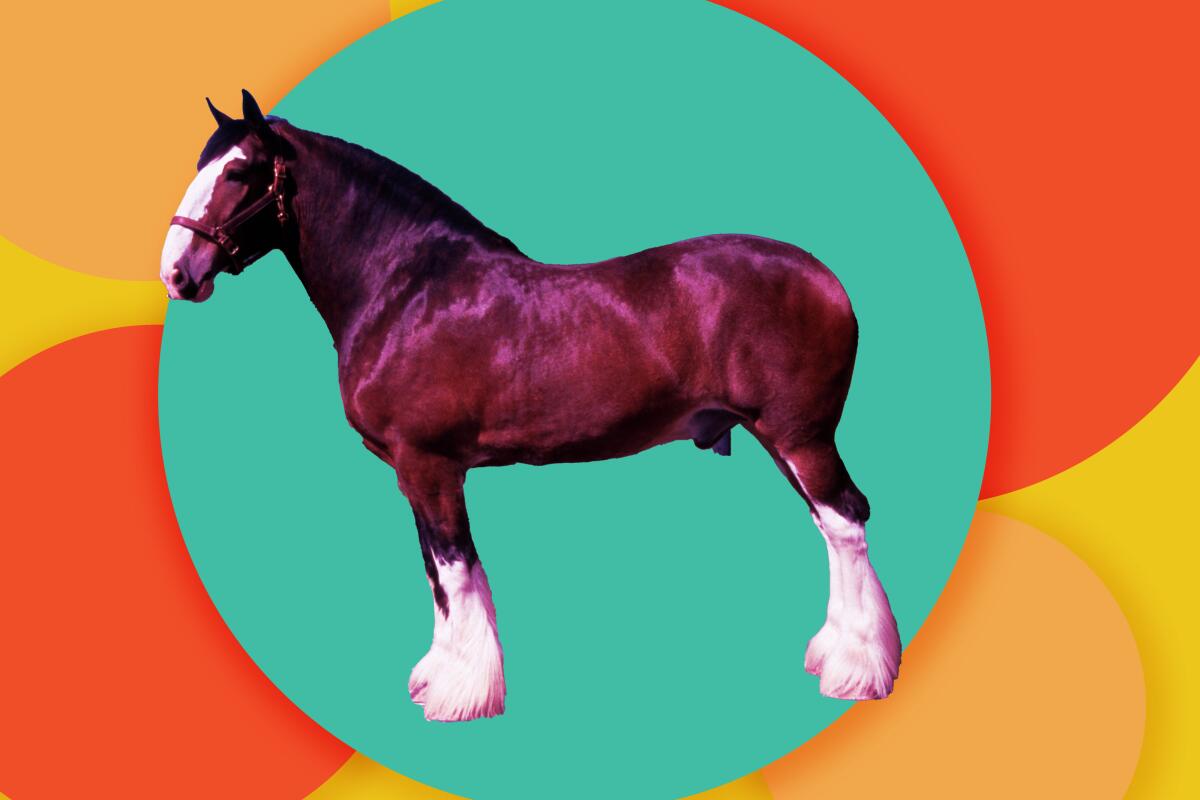
📰 What I’m reading
- Watts Towers turns 100! Reynolds reports on “what remains one of L.A.’s most admired and least understood landmarks.”
- What’s it like to visit Calistoga’s volcanic ash mud baths? Freda Moon describes her experience visiting the baths for the first time in SFGate.
- Zuni, a remote pueblo in New Mexico, is making sure tourism happens on its own terms. Sucheta Rawal describes the community’s tourism model in Travel + Leisure.
- How did an “underwater desert” off Mexico’s Baja Peninsula turn into a “kaleidoscope of life and color”? John Doerr explains the story of Cabo Pulmo National Park in Afar.
- Flying over the holidays or in early 2022? Times utility journalism assistant editor Jessica Roy offers tips for staying safe.
- Speaking of traveling, what happens if you test positive for COVID-19 while far from home? Heather Murphy breaks down what you need to know in the New York Times.
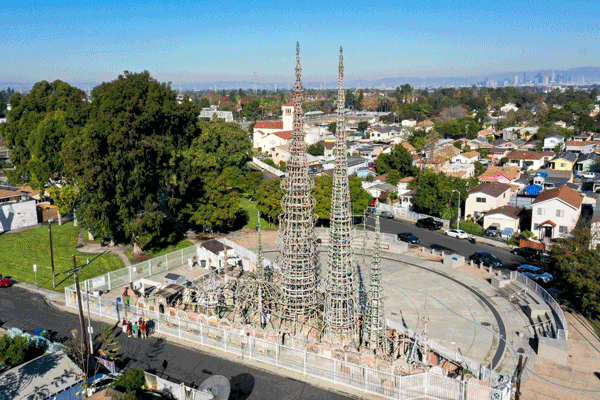
📸 Photo of the week
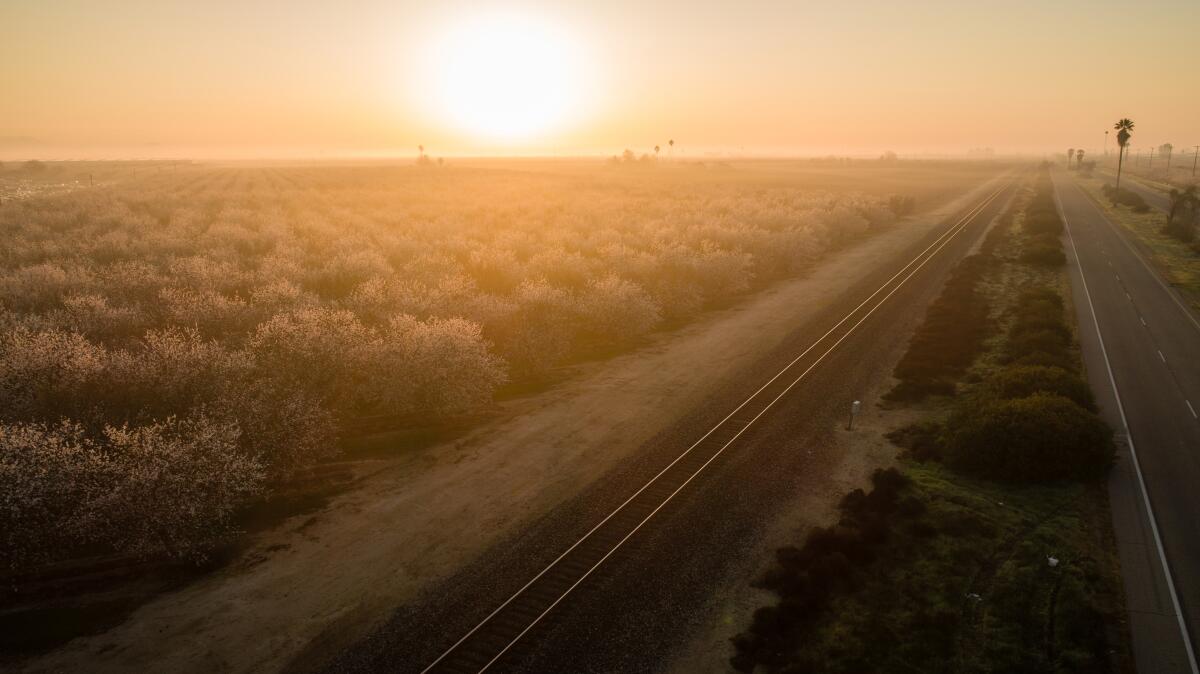
🎸 Road song
Song: “Scarlett” by Holly Humberstone
Favorite lyric: “We go together like bad British weather on the one day I made plans.”
Where to listen: driving down Cambria’s Main Street in the fog.
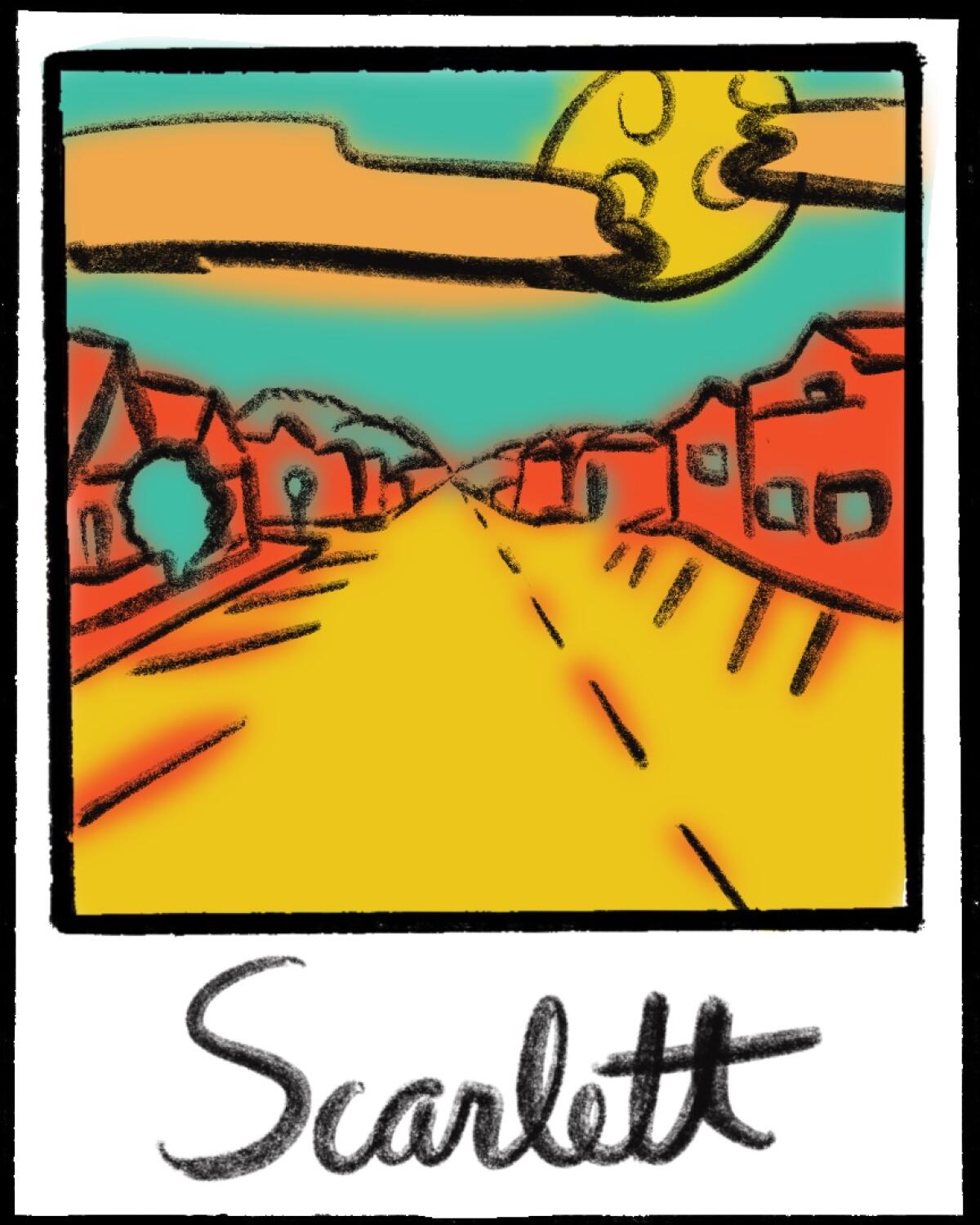
Sign up for The Wild
We’ll help you find the best places to hike, bike and run, as well as the perfect silent spots for meditation and yoga.
You may occasionally receive promotional content from the Los Angeles Times.




